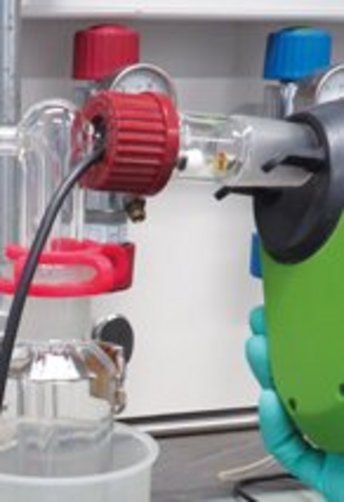Testing of an ioniser for undesired biological action potentials
The Bosse Design Ges. f. Office Interior mbH & Co. KG has developed an ioniser to improve the indoor air, e.g. by minimising particles in the air.

It was tested whether the ionisation of the air triggers subsequent reactions that lead to undesirably excessive hydroxyl radical concentrations.
During the test, the ioniser acted on the air in a grounded stainless steel chamber. About 1.5 m³ of test chamber air per hour was extracted via two simultaneously operated impingers. The extracted air was replaced by room air. This resulted in an air exchange in the chamber every 2.7 minutes. Despite the short residence time of the air, the effect of the ioniser was sufficient to enrich it with detectable amounts of substances that resulted in hydroxyl radical formation. The presence of hydroxyl radicals is evidenced by the detection of a dye (2-hydroxy terephthalate (OHTA)) that is formed when air passes through the impinger solution. Several hundred μmol/L of hydroxyl radicals are found in body fluids of healthy people. Consequently, the human body is always exposed to a significantly higher oxidative stress and has powerful mitigation mechanisms. When used indoors, the ionised air would not enter the test chamber, but would affect a room air volume that is usually more than 1,000 times larger. It was striking that in all investigations the OHTA contents of the samples decreased with the sampling time.
The investigations showed that only small amounts of hydroxyl radicals are produced during air treatment by the Bosse ION-Cloud. Nevertheless, the amount of hydroxyl radicals detected in the test chamber is lower by a factor of 10,000 than the concentration of hydroxyl radicals in body fluids of healthy people.
